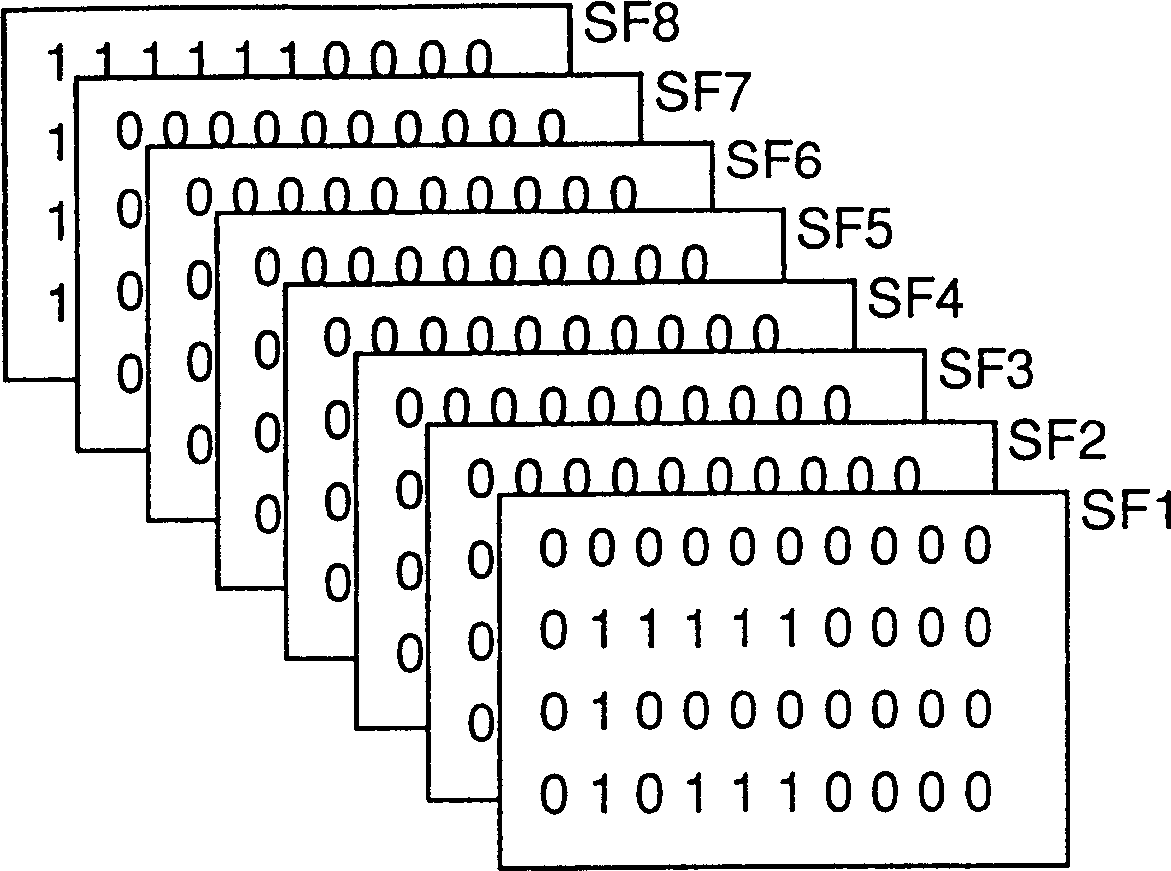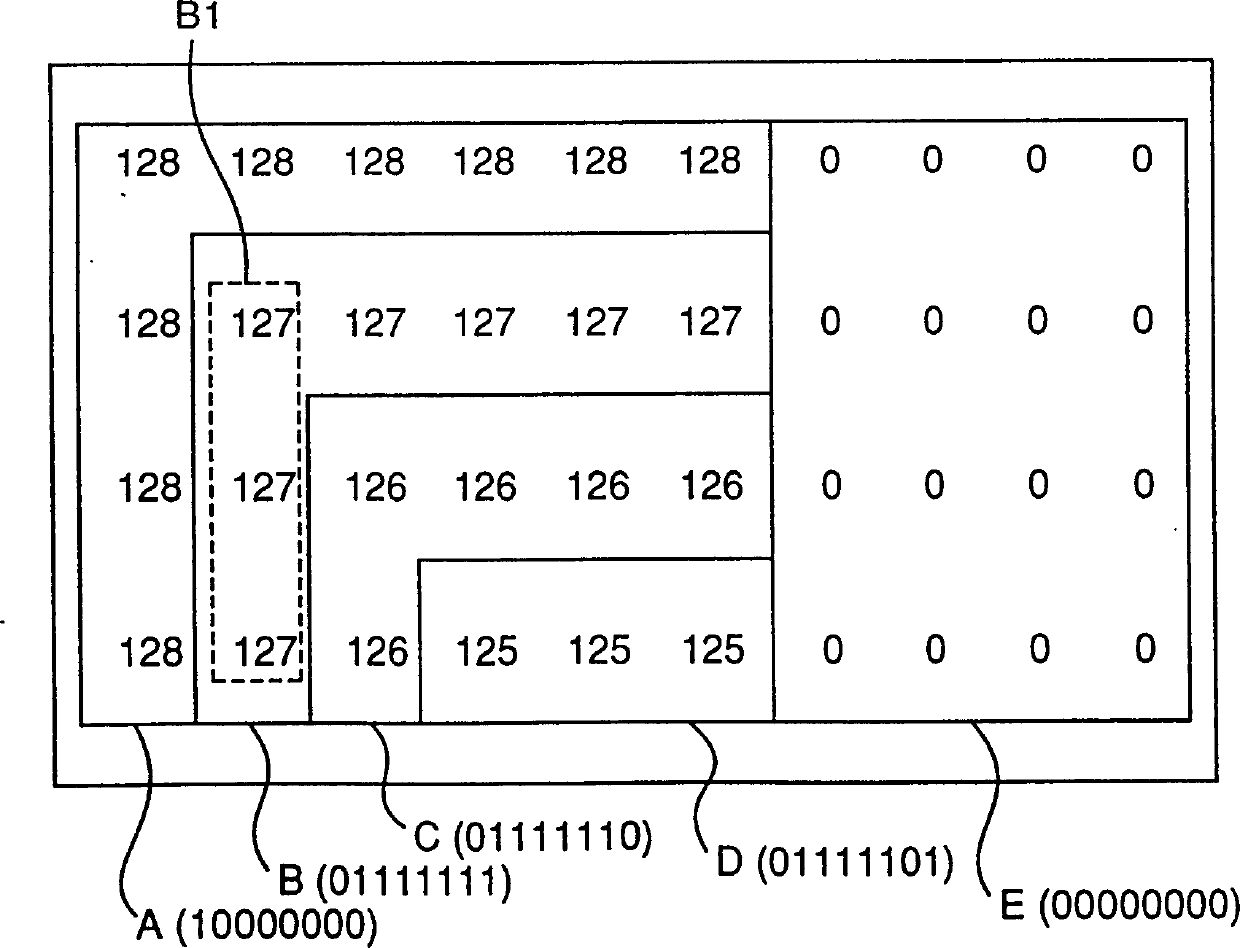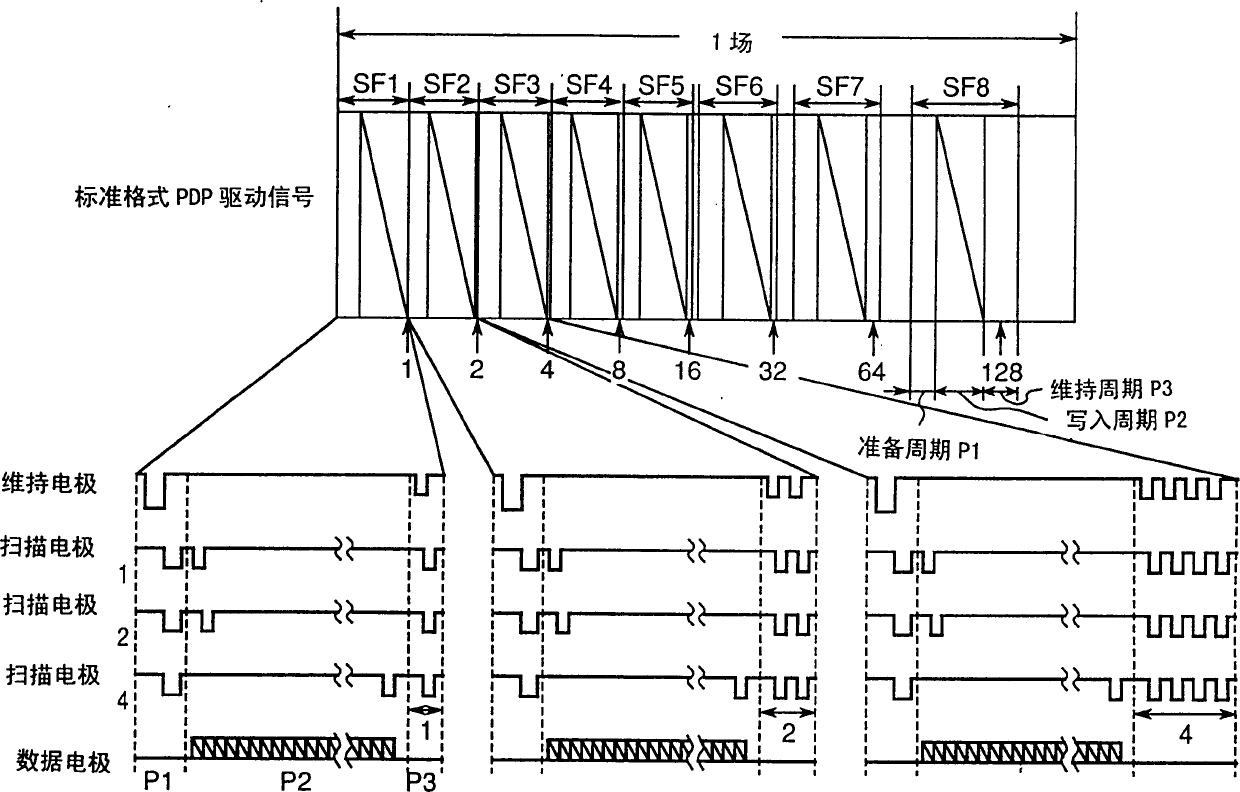Drive pulse controller of plasma display apparatus
A display device and display technology, applied to static indicators, instruments, etc., can solve the problem that the feeling of screen incongruity cannot be completely removed
- Summary
- Abstract
- Description
- Claims
- Application Information
AI Technical Summary
Problems solved by technology
Method used
Image
Examples
no. 1 example
[0106] Fig. 9 shows a block diagram of the display device of the first embodiment. Input 2 receives R, G, B signals. The vertical synchronous signal and the horizontal synchronous signal are input to the timing pulse generator 6 from the input terminals VD and HD respectively. A / D converter 8 receives R, G, B signals and performs A / D conversion. The A / D-converted R, G, B signals are subjected to reverse gamma correction by the reverse gamma correction device 10 . Before inverse gamma correction, each level of R, G.B signals, from the minimum value of 0 to the maximum value of 255, according to the 8-bit signal, is sequentially expressed as 256 different linear levels (levels) (0, 1, 2, 3, 4, 5, ... 255). The next inverse gamma correction, each level of R, G.B signals, from the minimum value of 0 to the maximum value of 255, according to the 16-bit signal, is displayed as 256256 linear different levels with an accuracy of approximately 0.004.
[0107] The R, G.B signals aft...
no. 2 example
[0126] FIG. 11 is a parameter determination diagram used in the second embodiment, and is utilized by the image characteristic determination means 30 in the block diagram shown in FIG. When using the parameter determination map of FIG. 11, the average level detector 28 in the block diagram of FIG. 9 can be omitted because the average level signal Lav is not used.
[0127] The horizontal axis of FIG. 11 represents the peak level, and the vertical axis represents the fixed amplification factor A. The graph of Figure 11 is divided into columns, in the example of Figure 11, from the higher level to 2.75 / 3.00 is C11, from 2.75 / 3.00 to 2.50 / 3.00 is C12, from 2.50 / 3.00 to 2.25 / 3.00 is C13, From 2.25 / 3.00 to 2.00 / 3.00 is C14, from 2.00 / 3.00 to 1.75 / 3.00 is C15, from 1.75 / 3.00 to 1.50 / 3.00 is C16, from 1.50 / 3.00 to 1.25 / 3.00 is C18, and the following is C19. Four parameters are specified for each column: the N times mode value N; the fixed amplification factor A of the amplifier 12; t...
no. 3 example
[0136] Fig. 12 is a block diagram showing a display device according to the third embodiment. And is utilized by the image characteristic determination means 30 in the block diagram shown in FIG. 9 . When using the parameter determination map of FIG. 13, both the average level detector 28 and the peak level detector 26 in the block diagram of FIG. 9 are used because both the peak level signal Lpk and the average level signal Lav are used.
[0137] The horizontal axis in FIG. 12 represents the average level Lav, and the vertical axis represents the peak level. The graph in Figure 12 is divided into columns by lines parallel to the vertical axis and into rows by lines parallel to the horizontal axis. In the example of FIG. 10 , it is divided into 9 columns along the horizontal axis at a distance of approximately 10% from the upper level and into 10 rows along the vertical axis at a distance of 0.25 from the higher level. So a total of 90 fragments are possible. The above-ment...
PUM
 Login to View More
Login to View More Abstract
Description
Claims
Application Information
 Login to View More
Login to View More - R&D
- Intellectual Property
- Life Sciences
- Materials
- Tech Scout
- Unparalleled Data Quality
- Higher Quality Content
- 60% Fewer Hallucinations
Browse by: Latest US Patents, China's latest patents, Technical Efficacy Thesaurus, Application Domain, Technology Topic, Popular Technical Reports.
© 2025 PatSnap. All rights reserved.Legal|Privacy policy|Modern Slavery Act Transparency Statement|Sitemap|About US| Contact US: help@patsnap.com



